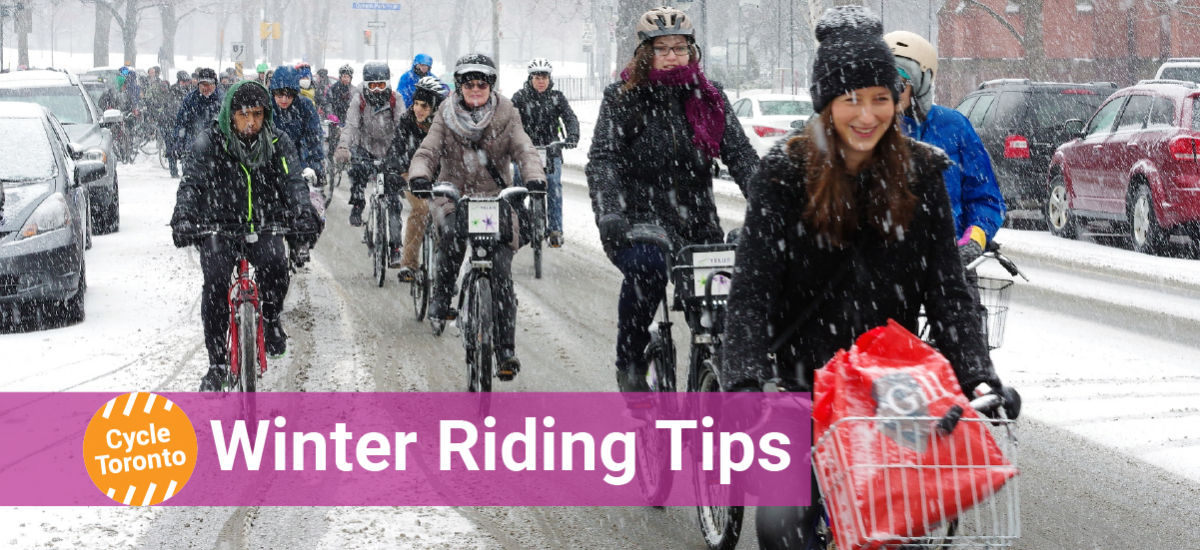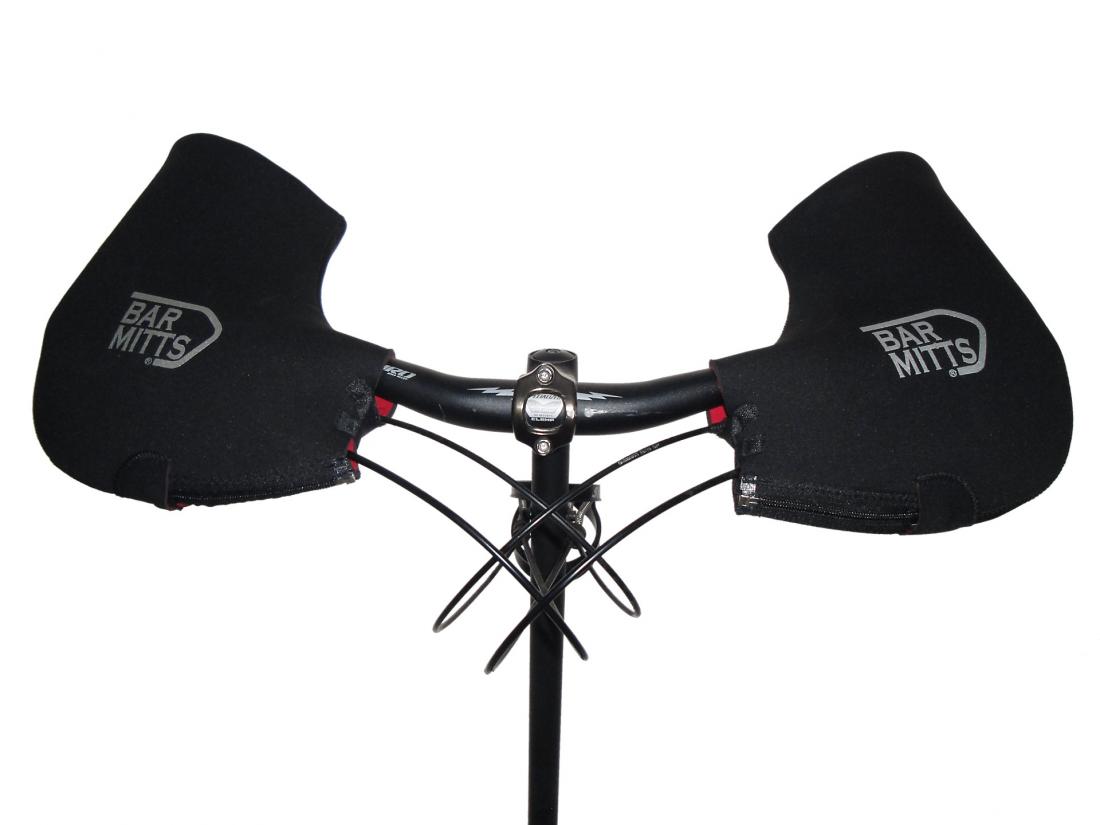
Photo by Martin Reis.
Winter Riding Tips
Updated February 2021
Colder temperatures and darker days are no reason to put away your bike for the season. While it can be a little more tricky to ride in the winter, there are a few things which can help make it possible. Indeed, cycling through the winter can be enjoyable, relaxing, and fun. Getting that extra bit of exercise can help get you through the darkest and coldest days, delivering you to work or home feeling fresh and revived. If you're thinking about giving winter riding a shot, here are a few ideas to help make it a good experience:
Wear layers & protect your extremities
If you live in Canada, you’ve already got most of the gear you’ll need for winter cycling. Wear a few layers that you can unzip/button along the way. The most important layers will be what goes on your hands, ears, and feet. Your core will get warm as you ride, but your fingers can be left feeling pretty frosty if you're under-equipped. Make sure you have a good set of gloves or mitts for your hands, boots for your feet and toque or earmuffs for your head and ears. Protect your eyes either with a pair of ski goggles or sunglasses.
If you want to get out and ride even on the coldest of days consider picking up a pair of handlebar mitts. Handlebar mitts add an extra layer of warmth for your fingers, but make sure they comfortably fit over your brakes and shifters before you ride. If the mitts are too tight they can make controlling your bike difficult.
Handlebar mitts
Look after your bicycle
While salt does wonders for melting ice on the road, it also accelerates rust on your bicycle. You can combat this by riding with front and rear fenders which also keeps slush from flying up your back. In addition, clean your bike regularly. Giving it a quick rinse off when you get home every day is a good idea. Make sure your bike is dry before you head out again; you don’t want your parts to ice up! If you’re not up for all that maintenance, consider getting a ‘beater’ bike for winter or picking up a Bike Share membership.
There’s a lot of debate on whether to ride with fat or skinny tires; fat tires potentially provide more traction, whereas skinny tires enable you to cut through snow. Studded tires are generally not necessary due to Toronto’s relatively warm winter conditions. For more in depth winter maintenance tips check out We Love Cycling’s tips.
Research your route
Generally speaking, Toronto roads are clear throughout much of the winter. However, after a major snow event it can days before Toronto’s roads are clear. While many riders prefer quieter streets through the snow-free months, lots switch to arterial roads in the winter as they get priority for snow clearance. You can follow the City’s plows here.
If you’re downtown or nearby you can use one of the City’s Cycling Snow Routes. These bike routes are given priority clearance, often with completion before the rest of the road. If the bike lanes haven’t been cleared or have had snow pushed back into them report it by calling or emailing 311. We've noticed they're responsive on Twitter @311Toronto, too!
Click here to read more about our thoughts on the status of snow clearing in Toronto.
If you happen to get caught out in a storm, not all is lost. You don’t have to lock up your bike and leave it until the roads are clear. You can put your bike on a TTC bus rack at any time. You can also take your bike on subways and streetcars during off-peak hours seen below.
Monday - Friday
- Before 6:30 a.m.
- Between 10 a.m. and 3:30 p.m.
- After 7 p.m.
All Weekends and Holidays
Go Transit has similar, but less specific guidelines for when you can travel with your bike.
Get Lit!
Winter days are shorter and darker. It's important that you can see and be seen on the road. Having a front and rear light is essential, and you can be ticketed under the Highway Traffic Act (see part IV: Equipment) if you don't have them. It’s a good idea to use your lights in dim conditions, even if it is the middle of the day.
Adjust your riding
There are a few things you can do while riding which can help you stay safe:
- Shift regularly to help clear your chain of snow build up
- Reduce your tire pressure for increased stability due to more tire contact with the road
- Take it slow and brake early. It will likely take you longer to get where you're going when there's snow on the road, so leave some extra time.
- Avoid riding over piles of snow. Do a head check and use hand signals to indicate to passing motor vehicles and other riders where you're going.
- Take your water bottle inside so it doesn't freeze! Better yet, take a small thermos and have a sip of warm coffee or tea on your way to work.
Extreme conditions can be difficult for even the most seasoned winter cyclists. If you do end up riding through a storm, or tackling the roads soon after, remember the basics of bicycle riding: avoid swerving and ride in a straight line. There are some times when, in the interest of safety, it can be best to leave your bike at work or home and take transit. Don't worry, you'll be back in the saddle in no time once the worst of the weather passes!
Winter cycling can be as much fun as riding at other times of year. With a bit of preparation, you’re good to go!
Reporting Snow in Bike Lanes
Now that you're riding in the winter, learn what you can do to report issues with winter maintenance.

